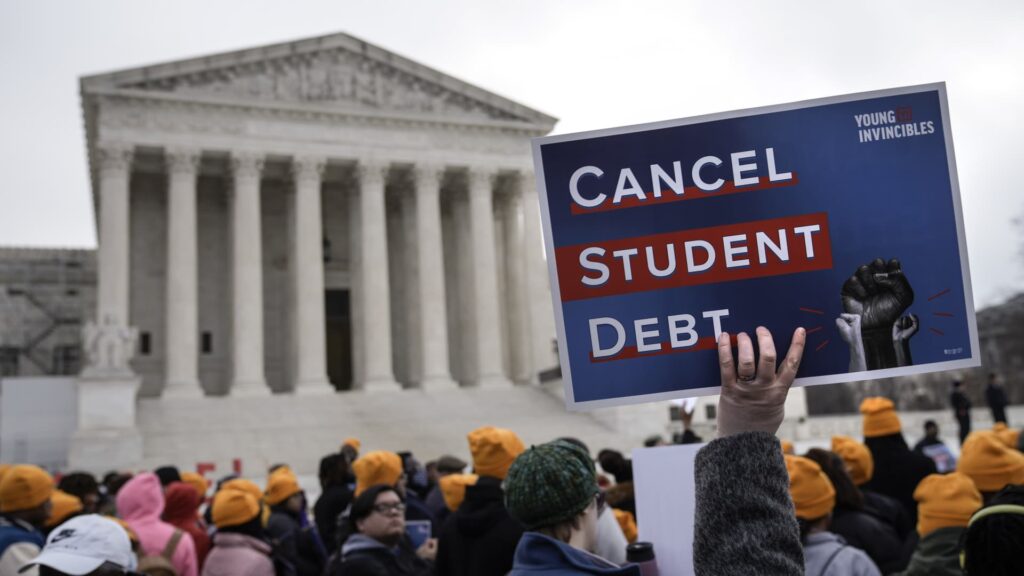This week, the Supreme Court heard oral arguments from both supporters and opponents of President Joe Biden’s student debt forgiveness plan.
Addressing two separate lawsuits, the nine justices questioned representatives from each side, aiming to determine whether the plaintiffs had the standing to sue and whether President Biden has the authority to grant relief in this way.
Student loan borrowers have the most immediately at stake, but the high court’s ruling and rationale could have bigger implications for the government.
It’s unlikely we’ll know how the justices will rule until June, but spectators on both sides of the issue found reasons to celebrate after Tuesday’s arguments. Here’s what to know.
Do the plaintiffs have standing?
Standing, or evidence that people will be harmed by an action, took center stage on Tuesday as the justices sought information as to why the plaintiffs don’t want Biden’s debt forgiveness to move forward.
The justices could come to the conclusion that the parties do not have standing and dismiss the cases. But if they do find standing for at least one of the plaintiffs, the justices would then examine whether the Secretary of Education has the authority to forgive student debt in this manner.
Since the plaintiffs of each suit are so different — a group of states in one suit and a pair of borrowers in the other — they naturally have different arguments for standing.
Biden v. Nebraska
During questioning about the first case, the justices spent a significant amount of time trying to parse the relationship between Missouri and MOHELA, an acronym for Missouri Higher Education Loan Authority, which is one of servicers for federal student loans.
The suit, brought by six states including Missouri, argues that Biden’s forgiveness would cut MOHELA’s revenue and as a result, hurt the state of Missouri’s bottom line.
“It’s hard to imagine how the state of Missouri can claim an injury…when it’s not responsible for the debts of MOHELA, it’s not…
Read the full article here





